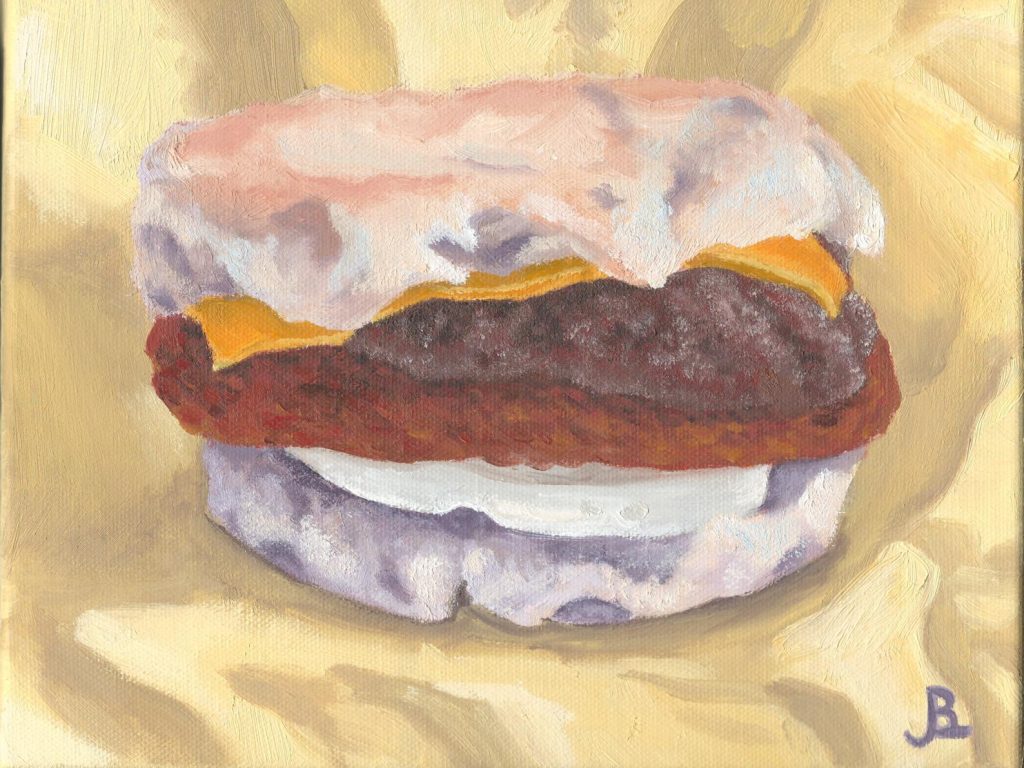Guest lecture with Louize Harries and Susanna Edwards
This week’s lecture with Louize Harries was very inspiring. The organic way her projects unfold and her inventive collaboration with maker communities and technology allies with my interests quite strongly. Reaching out to experts and being bold in your work seems to have really paid off for Harries, and it is encouraging to explore new avenues without being afraid to jump into something new that you have no experience in. Going from a textiles background to biohacking is a very big jump indeed! The ethical implications of her “My First Subconscious Shopper” project are weighty, and I appreciate that she decided to only use her own results to avoid any issues. This also underlines the uncomfortable implications of the project and drives home how much of our information we gladly, or unknowingly, surrender every day.
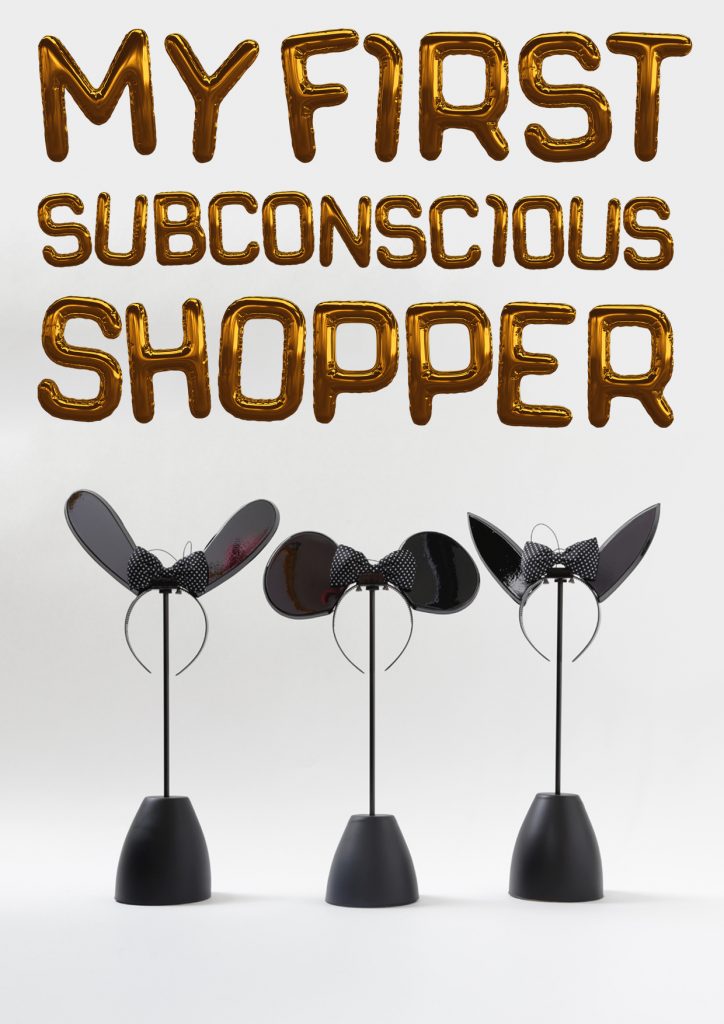
I was fascinated by Harries’ development of artefacts, as a print designer it is easy for me to think of every problem as a print problem. Design is so much broader, and it is helpful to be reminded of the true breadth of the field. Harries is deeply explorative as well as collaborative, and creates thought provoking work with a solid backing of research and development. It seems important to take that spirit of creativity and exploration into a project, rather than default to what is comfortable and known.
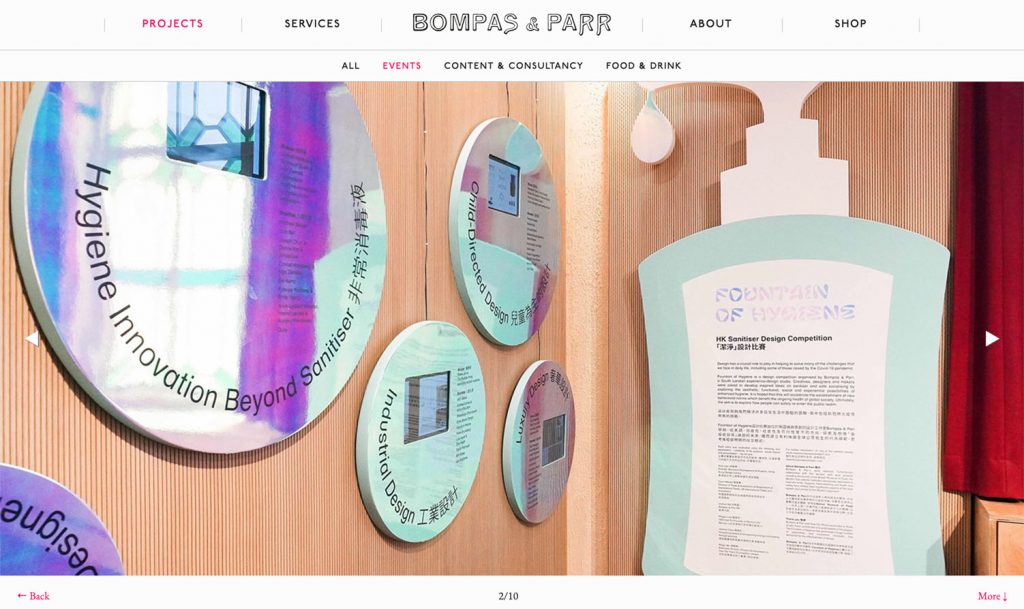
This lesson is also echoed by Bompas and Parr, designing experience and spectacle, they mix genres with wild abandon. Their work is truly interdisciplinary, intersensory and collaborative with a keen eye for the lush and ridiculous. The visual is still very important, but how it works in conjunction with every other part of the experience is also key to their immersive experiences. I find it very interesting how they have developed an innovative design practice out of leveraging jellies!
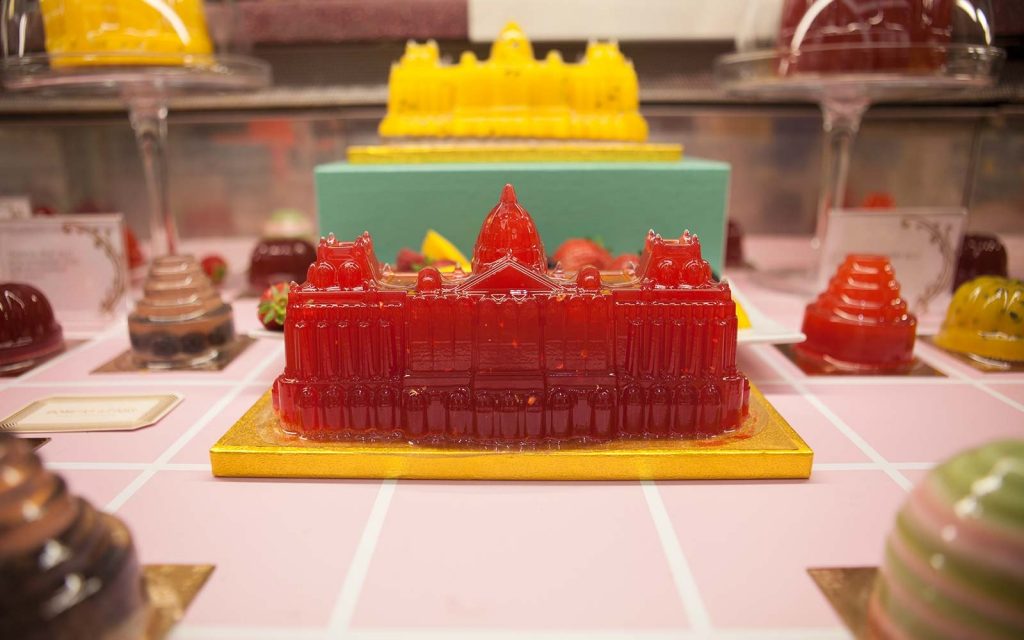
I also looked into the Hackspace website mentioned by Louize Harries. Hackspaces and Makerspaces are very interesting to me – my project for week 4 revolved around a speculative print studio makerspace that would be open to the public part time. Creating access to tools and training and encouraging skillsharing is of vital importance to me. Society is struggling with a reliance on over consumption, and anything we can do to encourage repairing, reusing, upcycling and creativity are desperately needed. There is not much of a makerspace community in Cornwall, there have been attempts, including a workshop located at the Penryn campus of Falmouth, but they have never taken off. The few remaining spaces tend to be personal workshops that are occasionally open to the public. Fix it cafes are also occasionally run, but having a dedicated space would be so beneficial to the local community.
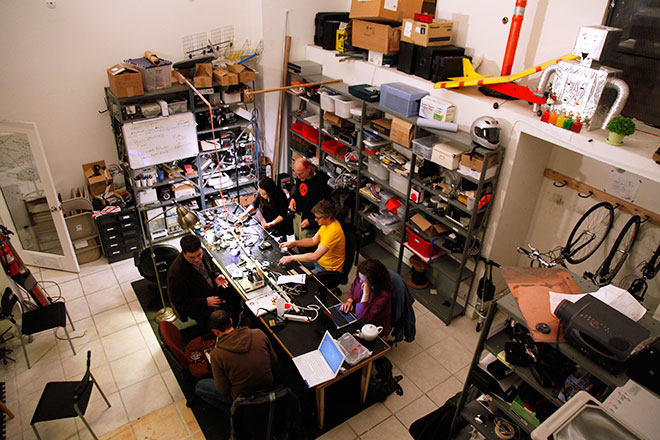
Workshop challenge
What are the advantages of interdisciplinary provocation and how could you utilise this approach in your practice?
The challenge this week was very intimidating. I was concerned that I would not be able to find anyone willing to be interviewed, so I tried a scattershot approach. I posted on an internet community I’m a member of looking for volunteers and within an hour of posting I had three interviews scheduled. All three were from different backgrounds and specialisms and each of them wanted to speak to me about a separate subject. This was challenging and I still wasn’t sure what the outcome from the week was supposed to be, but I jumped in headfirst, trying to put my trust in exploration and the process. After investing in an entry level, but decent microphone for a voice over task in a previous module, I set up a recording environment and did some practice sessions. By recording directly from Zoom I was able to capture both audio and video of the conversations. I also used the note recording app on my phone as a backup in case anything went wrong with my primary recording setup. This worked well, and there was a marked increase in quality using better equipment.
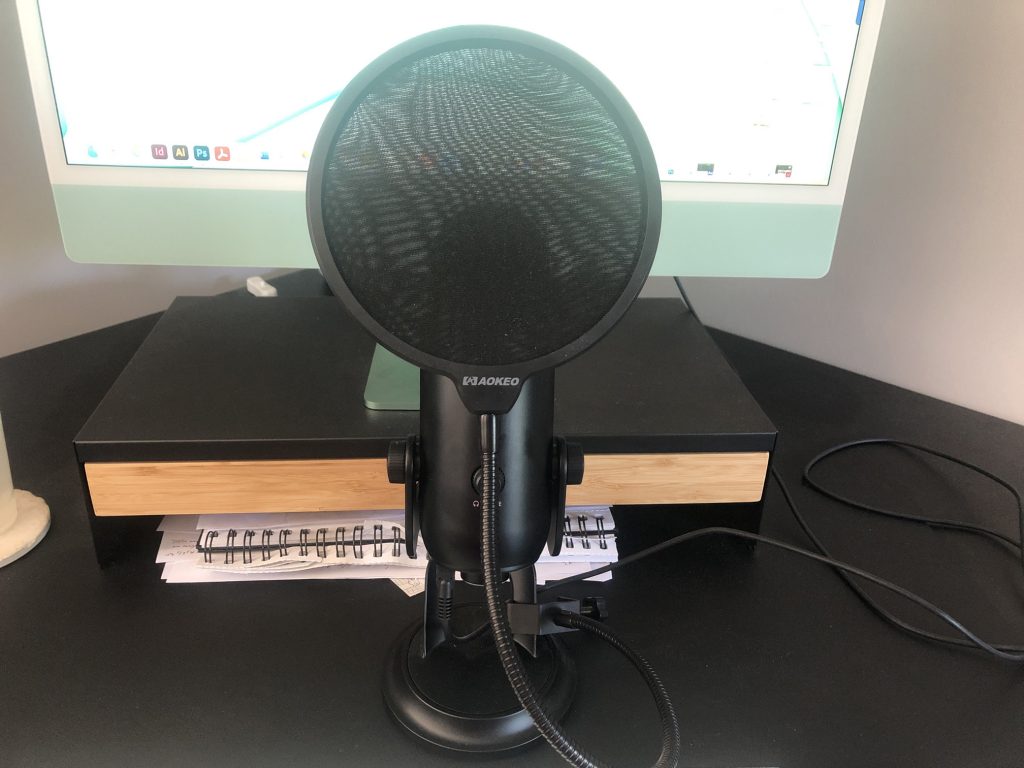
My first interview was with Sara Grady, a marine ecologist working for the Massachusetts Bay’s National Estuary Partnership. We spoke about her job, inner city pollution, how she works with the public and other service bodies, and in more general terms about collaboration and interdisciplinary working. She had some fantastic insights into pollution that I had not even considered – in my research on the subject I had mostly focused on air pollution and emissions. Sara touched on several other sources of pollution as well including:
Thermal pollution – cities are heat islands, generating and trapping heat
Noise pollution – this can be detrimental to both people and animals
Light pollution – this is also constant
Water pollution – the more pavement in a city the more runoff water accumulates from hard surfaces and flows into the sewers and waterways
We had an interesting conversation about ecological recovery programmes and community outreach, that when people are engaged with and experience the environment around them in positive ways, they are more likely to want to take care of it. We also touched on the importance of establishing common ground with people you are collaborating with, not relying on buzzwords or jargon but being thoughtfully engaged with those you are speaking to, and the importance of user based design and thinking of an end user’s needs. She also spoke about her experience with working with a graphic designer at work and how they helped different departments create posters for a community river walk, which was interesting to hear from the opposite perspective.
I also spoke with Halle Lyninger, a genetic counselor from Louisville, Kentucky. Halle wanted to speak to me about community building, as that is her life’s passion, and we had a fascinating conversation. Halle explained the concept of social capital, networks of relationships and social support that is in decline in America. Social capital was at its strongest in the 50s, with social organisations such as churches, fraternal organisations, recreational groups, community centres, etc. being a very important part of most people’s lives. This created an interdependent community who could rely on each other in times of need as well as for recreational purposes. Halle is creating her own community, but is quick to stress that it isn’t necessarily about friendship, they jokingly refer to it as “church” although it is not religious, but it is the sort of community care they are creating. We hit on several things that make for a successful community, and those included:
Events – having social get togethers is an important part of community forging, eating together and having social events is the glue of a community
Planning – most people don’t realise the amount of time and effort it takes to organise and plan constant events, but you need to have people thinking of this and being aware of the needs of the community as well rather than defaulting to the same thing every week
Reliability – knowing that events will continue, individuals can dip and and out, but they have a sense of stability about them and can be relied on for both giving and receiving aid
Engagement – being engaged in the community and giving back to it is the point of having a sense of community. Knowing that what you put in will come back to you as support in other areas
We spoke about how being part of something bigger than yourself can give your life meaning and richness. We also spoke about how cultural ideas can influence your sense of community, that America has leaned hard into the concept of individualism to a negative degree, with people refusing to acknowledge the benefits they’ve received from living in a connected society and refusing to help others. We spoke about migrant communities, and that they are usually more tightly meshed and the idea of the American melting pot can be damaging as some people demand immigrants give up their own culture to assimilate.
This was a very eye opening conversation for me. I grew up in a religious tradition with an incredibly strong sense of community which extends world-wide, and I had not considered that this was not available to everyone. We spoke about loneliness and the lack of a safety net, both socially and economically in America, and I wish Halle continued luck in her community building efforts.
Finally I spoke to Brandy Jefferys, an artist and teacher from West Virginia. Brandy is in the very early stages of trying to organise a co-operative gallery space in her town, which is trying to develop an arts district. We had a very interesting conversation about galleries and museums, about lowering the bar to entry and encouraging community engagement. It was a mutually beneficial conversation and we were able to develop some ideas that Brandy will be able to use as she organises her co-op space.
We spoke about the intimidation factor of galleries and museums. That galleries can be seen as being “high-brow” and that there is pressure to make purchases, so we touched on some points to make the space more engaging-
Give people a purpose for going in – galleries can be intimidating, there is a cultural bar to entry, a class barrier and preconceptions that need fighting against
Having a secondary small rotating space with community involvement – putting on exhibitions by local students, etc. which gives people a reason to enter the space
Having multiple price points – selling prints or low cost postcards lets people feel like they can pop in and afford to buy something, instead of being scared of expensive original pieces and intimidating staff
Creating a warm and inviting space with community events – having a gallery space be friendly, offering workshops to encourage people to stop by for a specific reason
Using pop-up spaces at events or on the sidewalk – Setting up a mobile screenprinting booth or making a zine at a community event gives people a reason to interact and engage with creativity and feel they are part of the process
Interesting exhibitions that highlight different kinds of art – We spoke about tattoos and gig posters specifically, but having a “hook” with an exhibit that is different will engage with different members of the community, every exhibit change is also an chance for promotion of the gallery as a whole
Create a safe space to engage with creativity – so many people have lost the childlike creative spark they once had and giving them a safe space to explore this is a huge draw. Having pre-made elements or a variety of creative entry points lets people dip their toe in and feel engaged without any pressure to produce something
You need to know your community – knowing your community and what they need is key to meeting those needs
Brandy also teaches drawing classes at her local museum and we spoke about how museums can be such a resource for education and outreach in their local communities. She mentioned that every year they have an art exhibitions that pulls from all of the local high schools in the area and that this is the most successful event they do all year. Free art classes for children where the parents need to stay and engage with their kids is also very popular and gets entire families involved.
Final outcome
I chose my conversation with Brandy to trim into the 10 minute podcast as it was the most relevant to the task in the end. Trimming this down was very difficult. I had to prioritise sections where I had complete interactions, but had to trim a lot of very relevant discussion. I used Audition to edit the audio, and though it was the first time I’ve used the program, which is always a struggle, what was much more difficult was choosing what to include and what to cut.
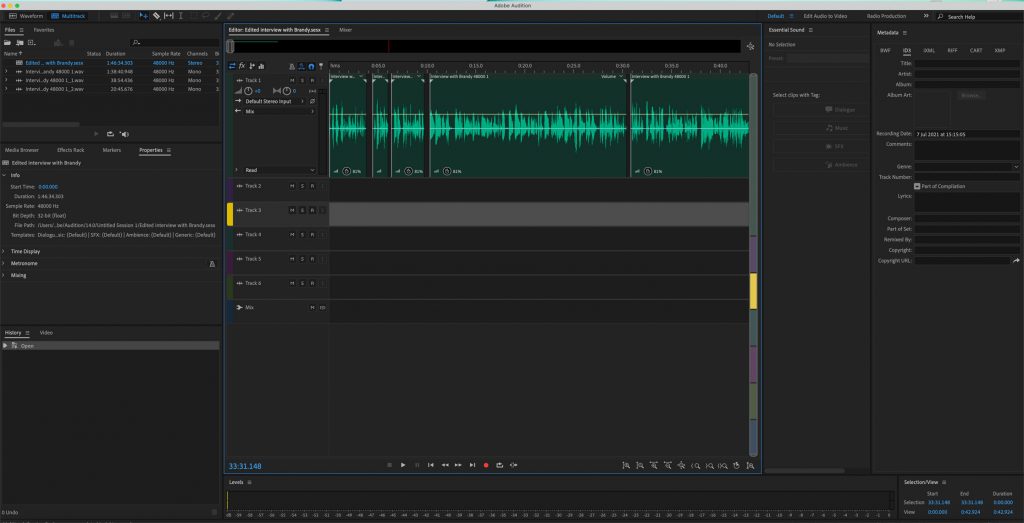
I used Otter.ai to generate transcripts of all of my interviews, and this was incredibly useful for editing the audio as well. I was able to go through the entire transcript highlighting what I thought were the most important elements to include, and didn’t have to rely on jumping through the audio randomly, hoping to find what I was looking for.
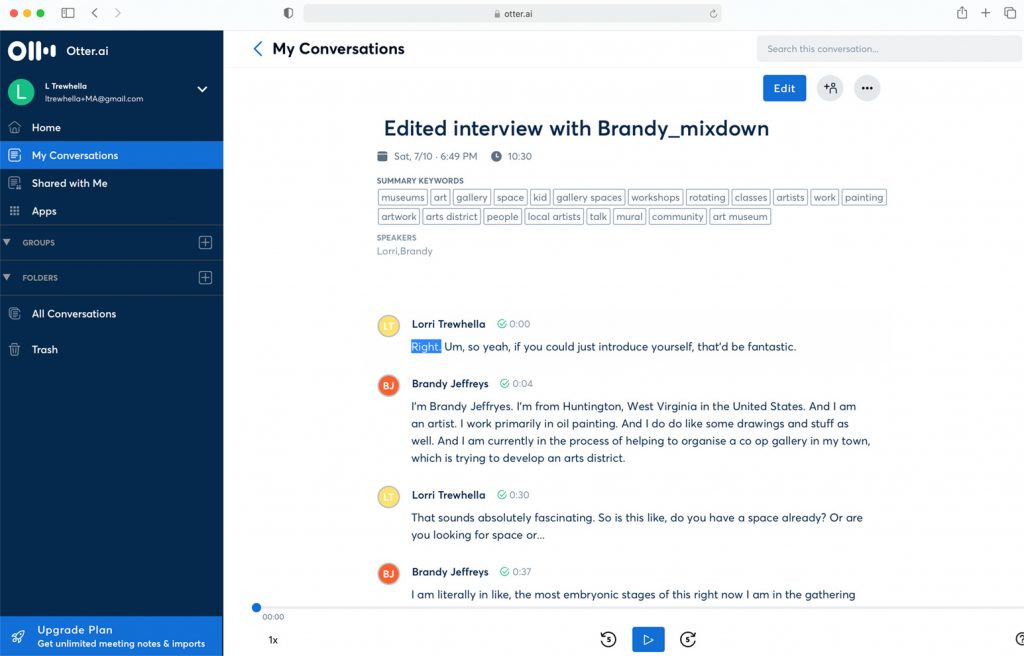
Final podcast
Reflection
I was dreading this task, I’m not an outgoing person and arranging an interview and editing it was very intimidating to me. I was very pleasantly surprised at the outcome. I ended up having three incredibly engaging conversations and speaking about subjects I may have not possibly considered myself. The conversations were also very different to each other, and I was able to use some of the principles we spoke about in earlier conversations to build on in later conversations. It would be interesting to broaden the scope further, and speak to all three at once about another subject. Insight can come from so many avenues and collaborating with others is vital. The key thread that came through in all of my conversations ended up being knowing who you are engaging with. Whether this is your collaborators, your audience, or your community, research and education on the end user is key to a successful project.
References
“Bompas & Parr.” 2021. Bompasandparr.com [online]. Available at: http://bompasandparr.com/ [accessed 3 Aug 2021].
EDWARDS, S., HARRIES, L., 2021. Week 6 [lecture]. GDE710 for MA Graphic Design. Falmouth: Falmouth University 2020 [Accessed 3 July 2021]
GRADY, Sara. 2021. Interview. July 5, 2021.
JEFFERYS, Brandy. 2018. Rocket [Oil on canvas]. Available at: https://www.brandyjefferys.com/work/biscuits [accessed 2021].
JEFFERYS, Brandy. 2021. Interview. July 6, 2021.
LYNINGER, Halle. 2021. Interview. July 6, 2021.
TEDX TALKS. 2015. “Makerspace: Make Community | Jamie Leben | TEDxFrontRange.” YouTube. Available at: https://www.youtube.com/watch?v=CQnXaShzuHw [accessed 20 Aug 2021].
TREWHELLA, Lorri. 2021. Photos from Personal Collection.
TWENEY, Dylan. 2009. “DIY Freaks Flock to ‘Hacker Spaces’ Worldwide.” Wired [online]. Available at: https://www.wired.com/2009/03/hackerspaces/ [accessed 3 Aug 2021].
